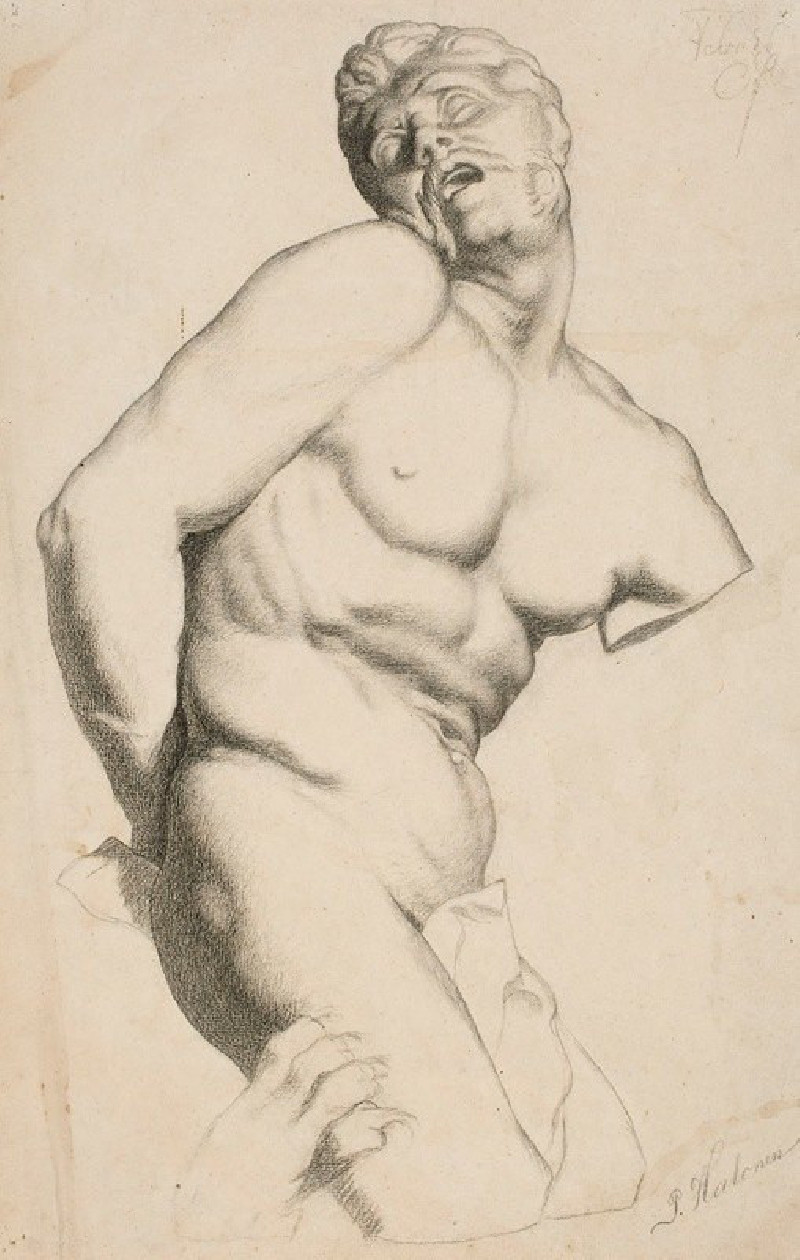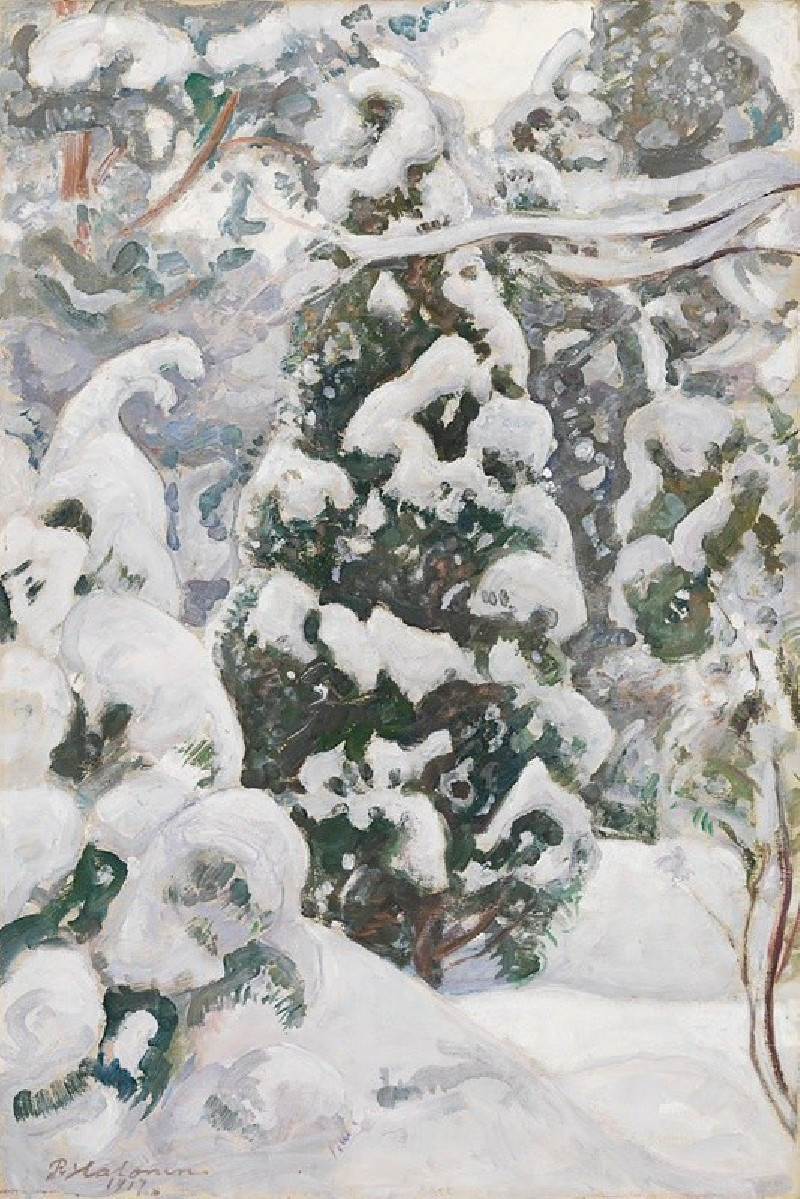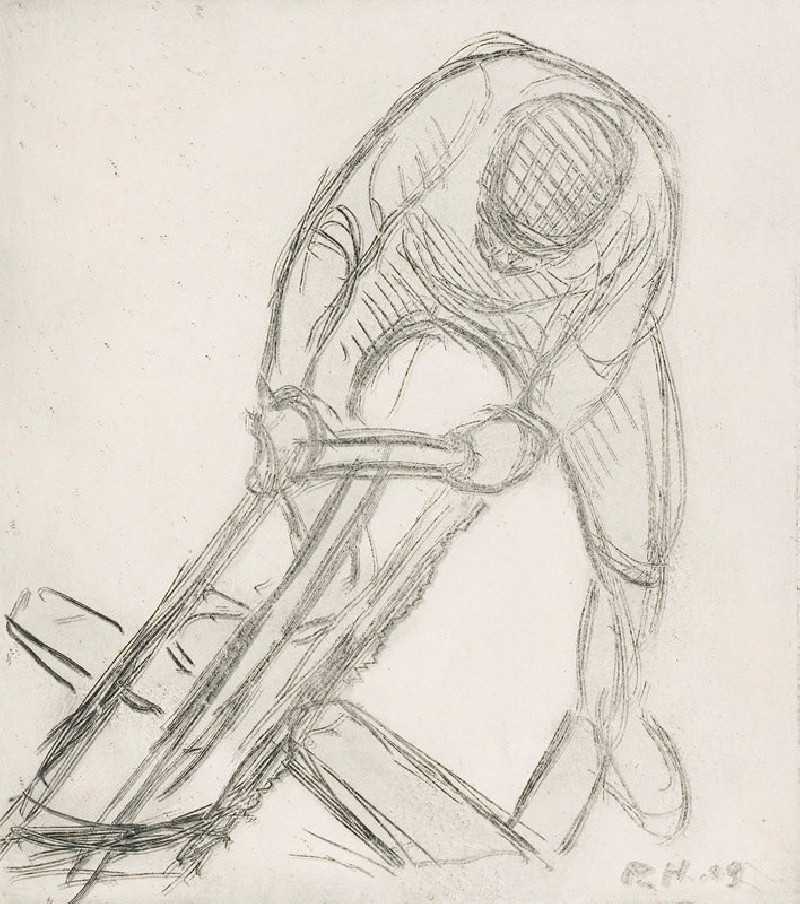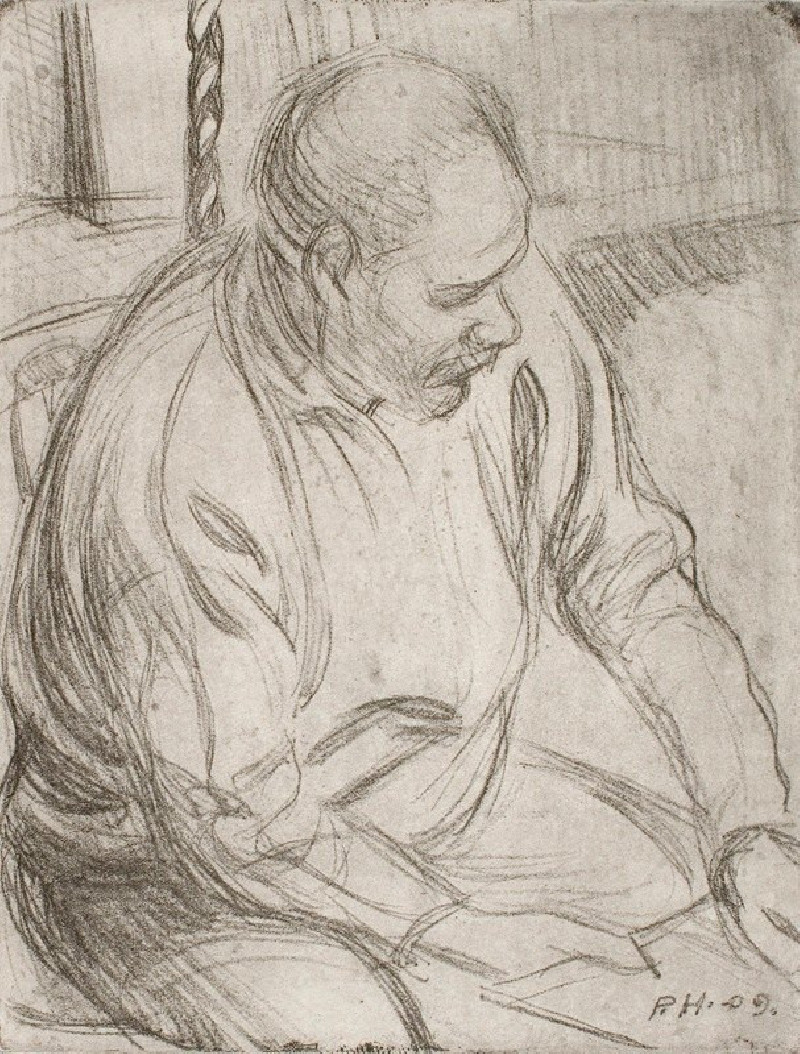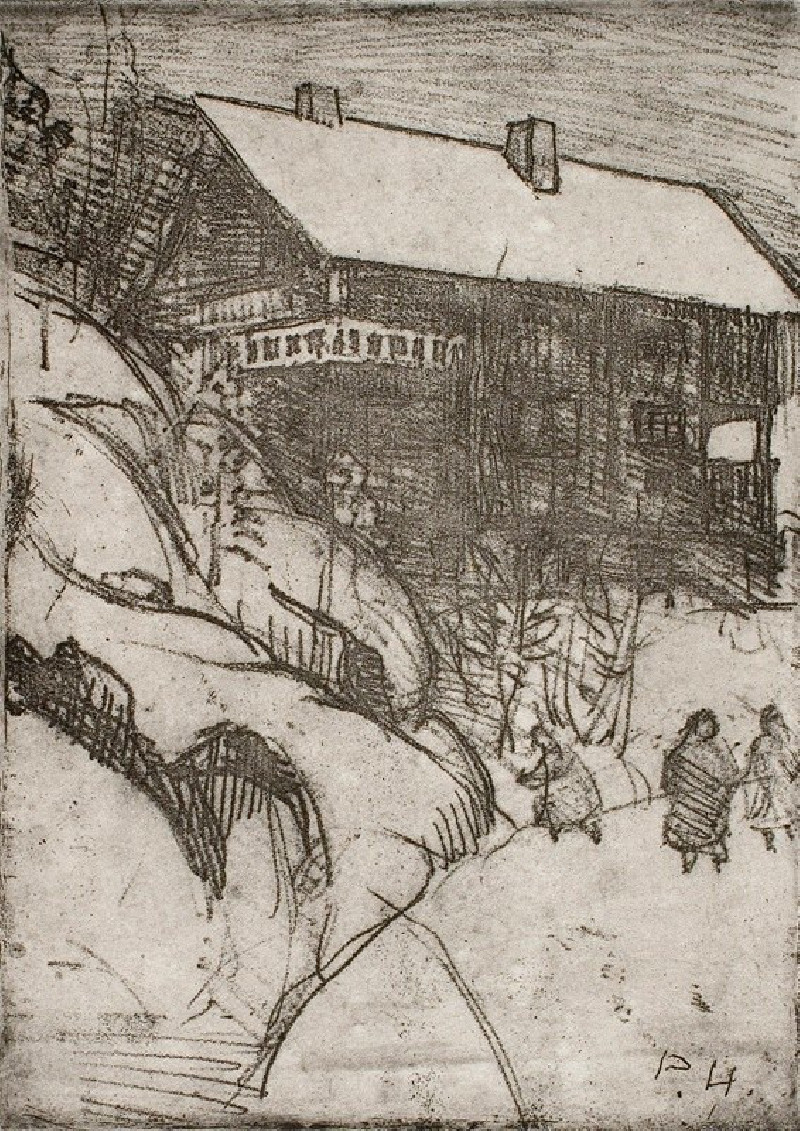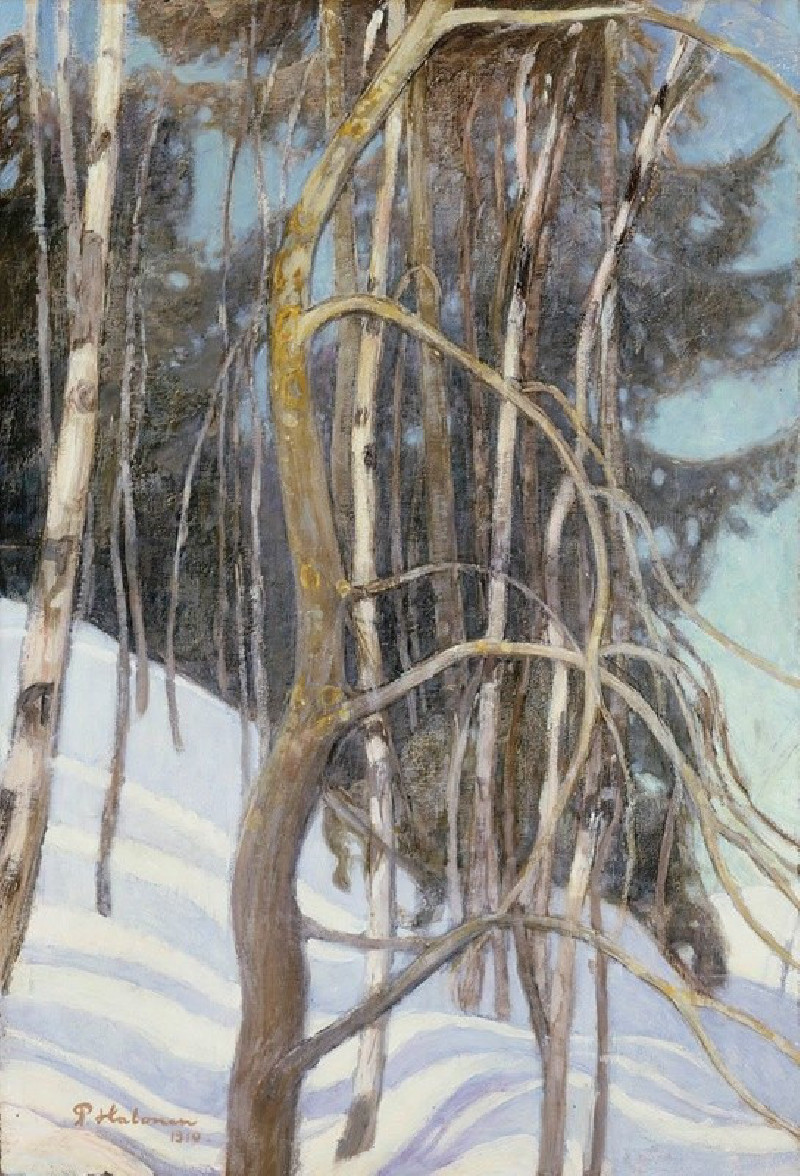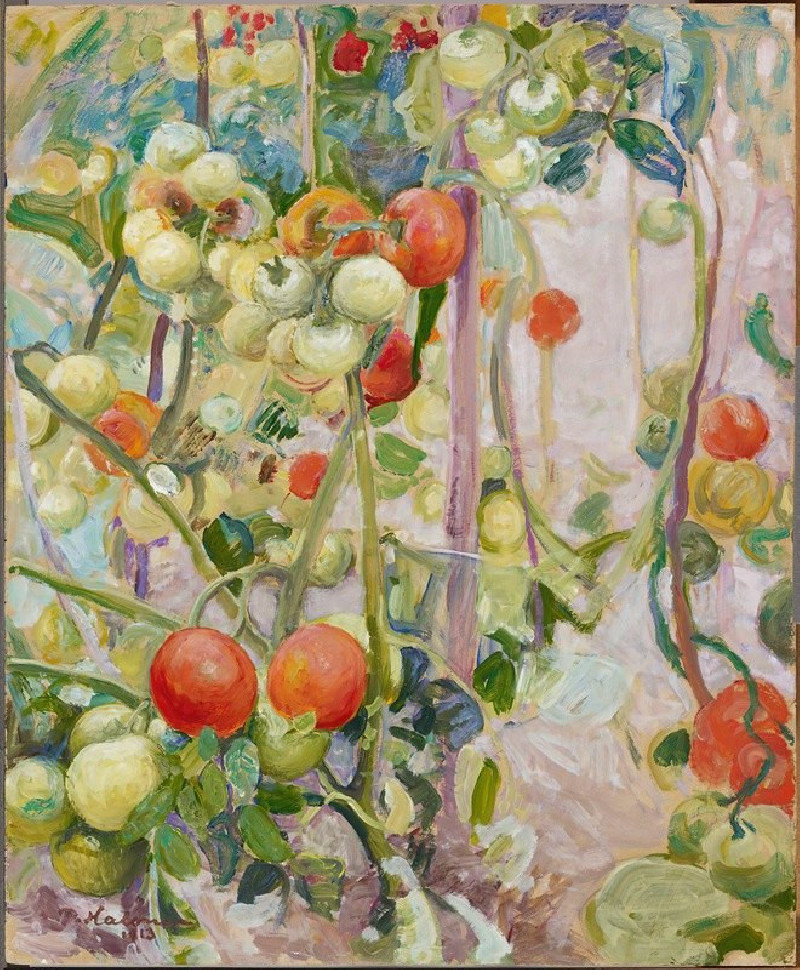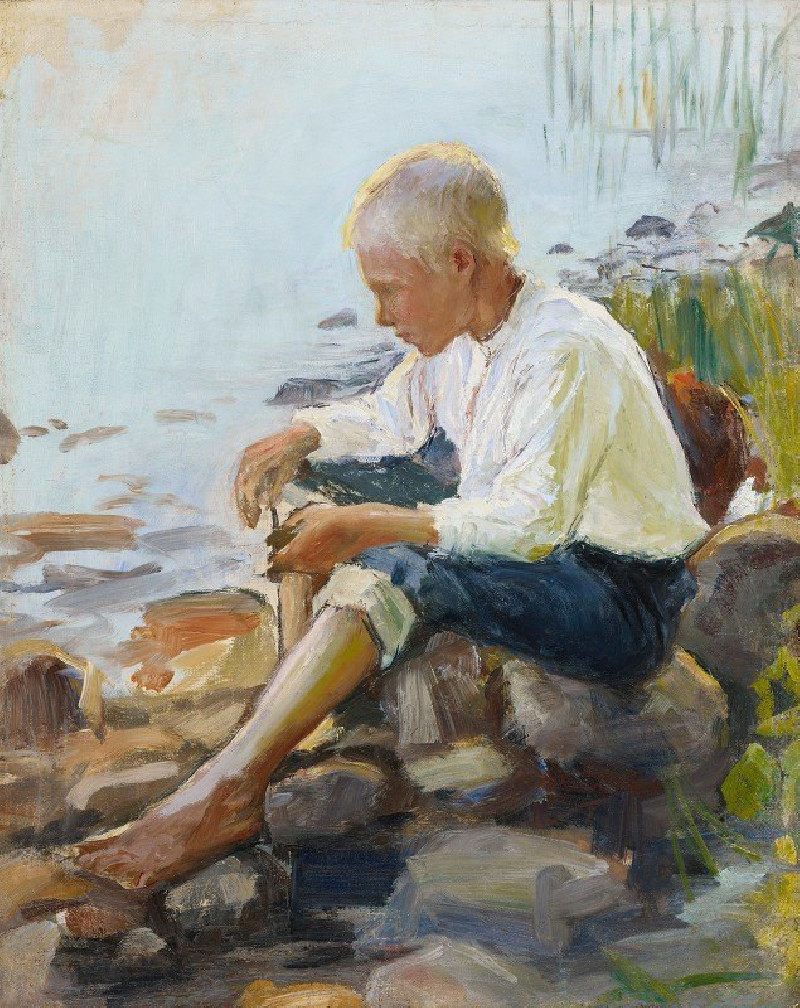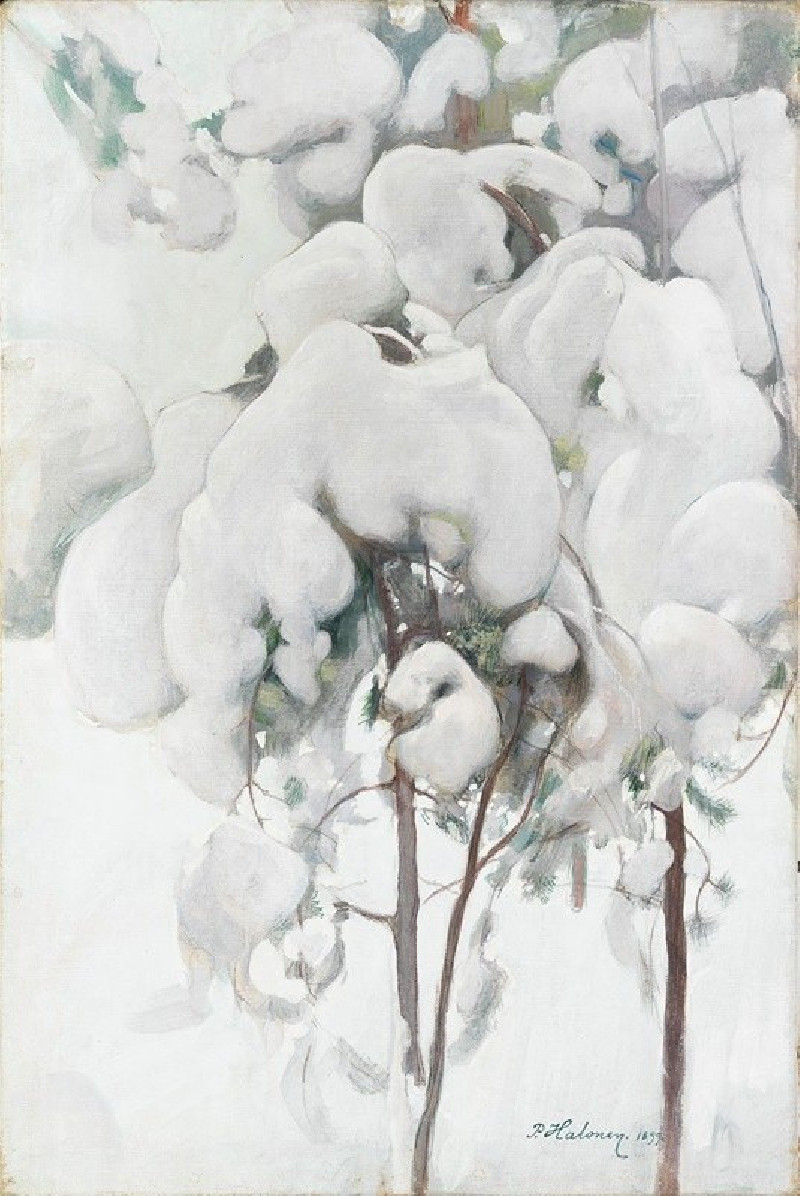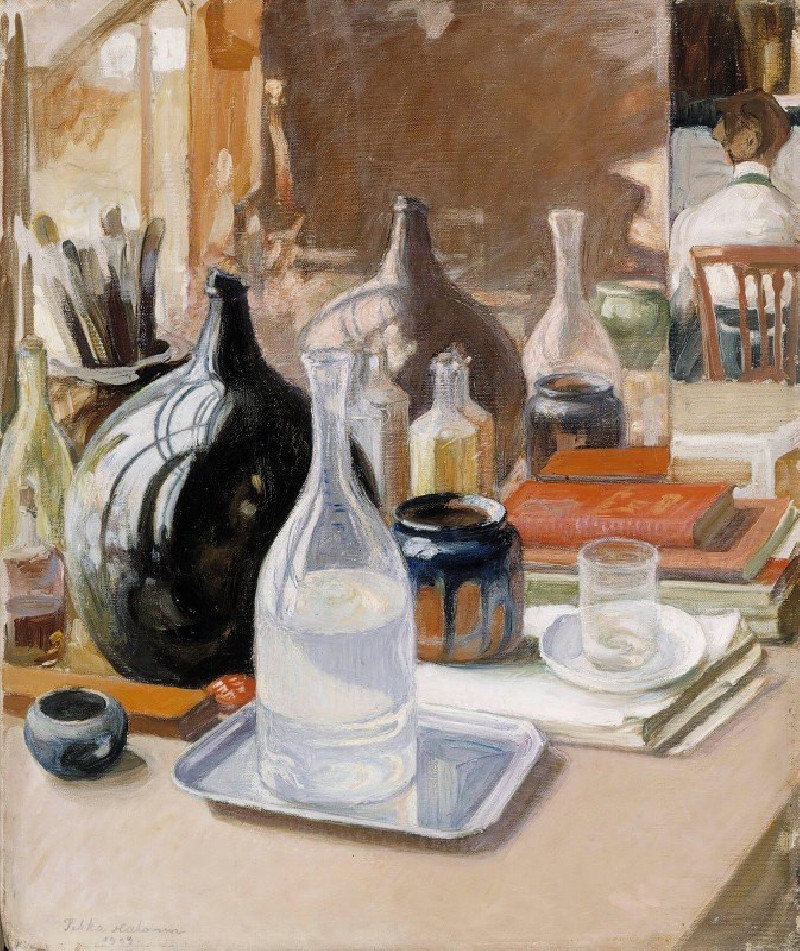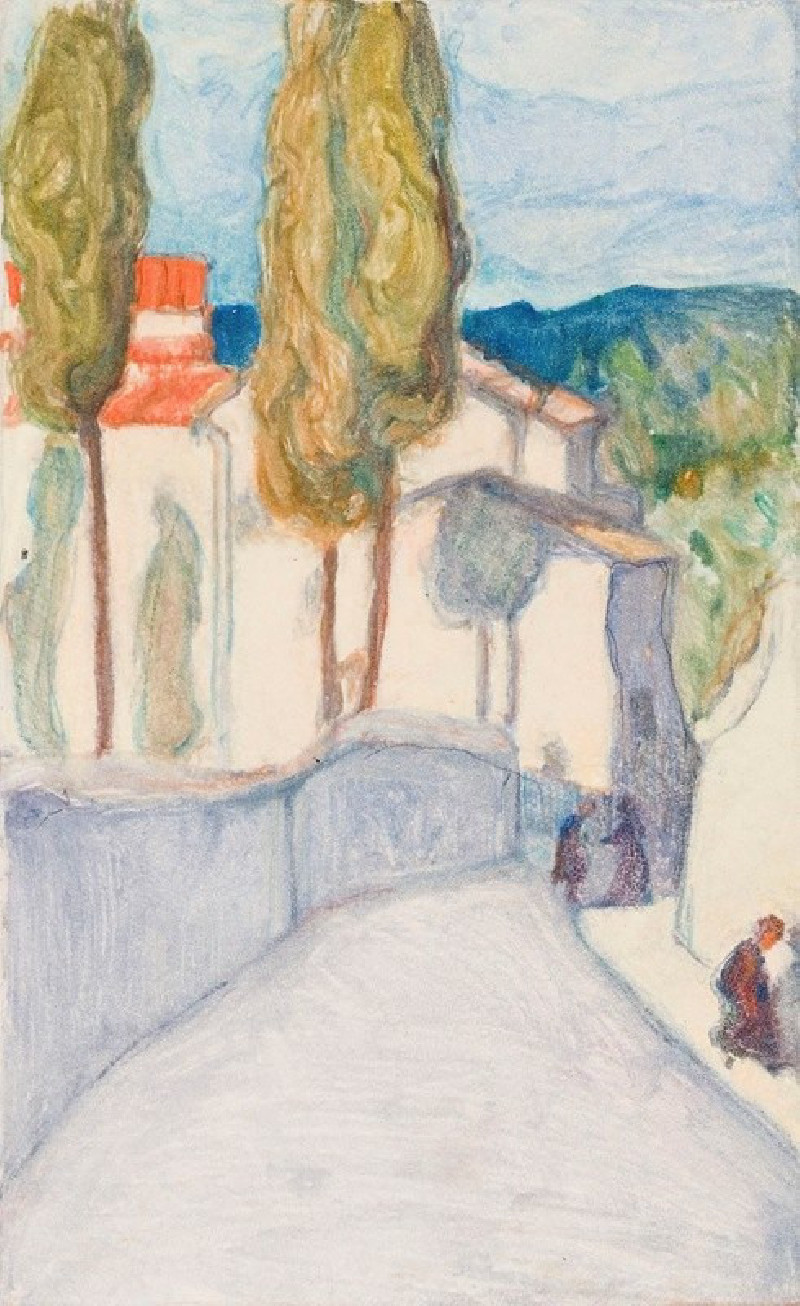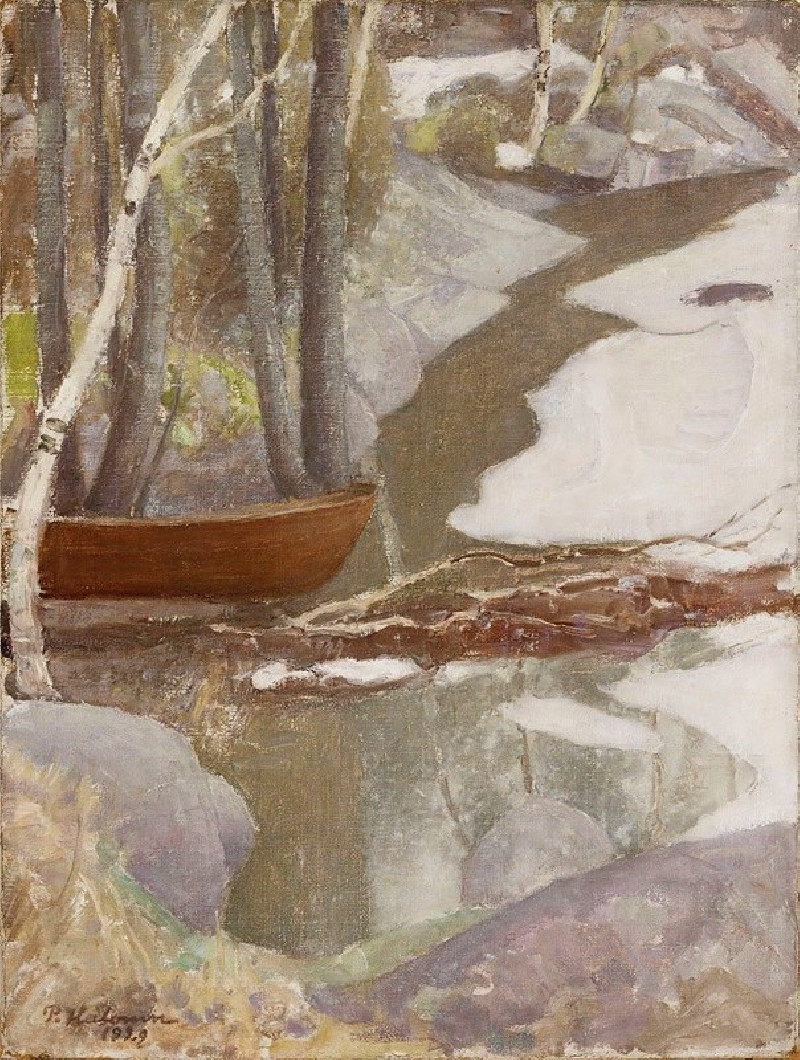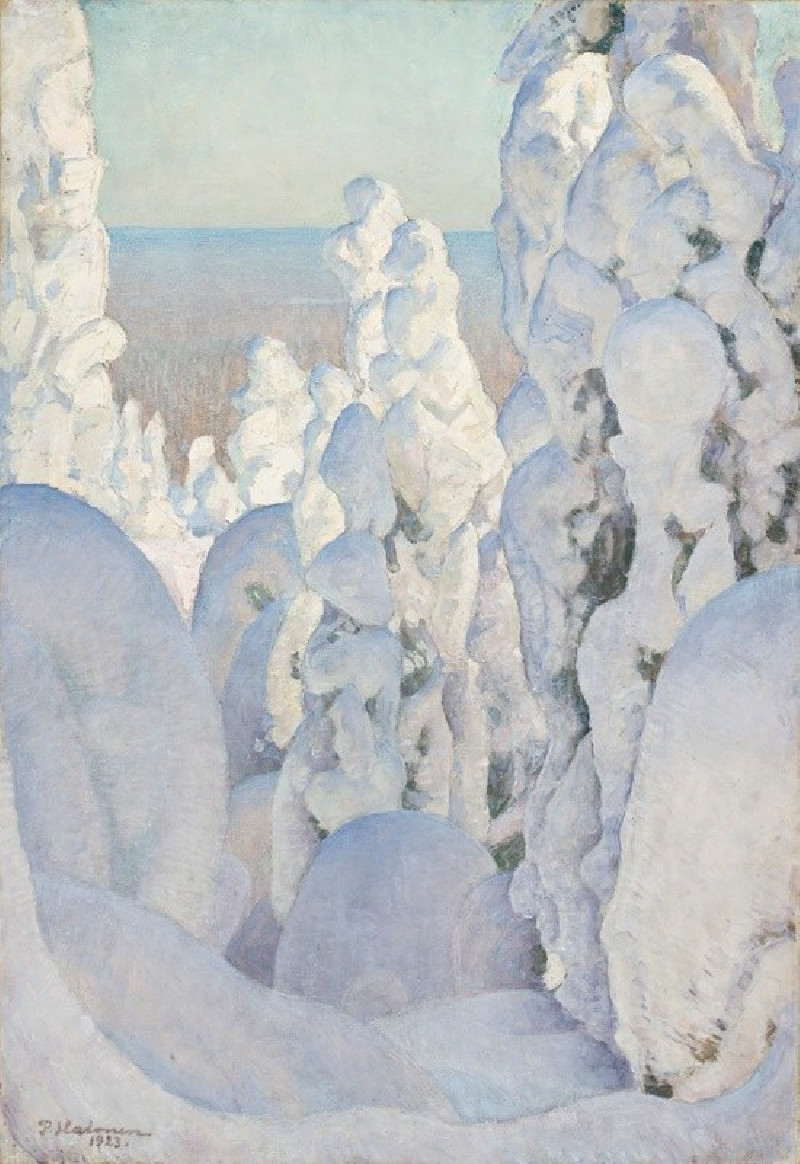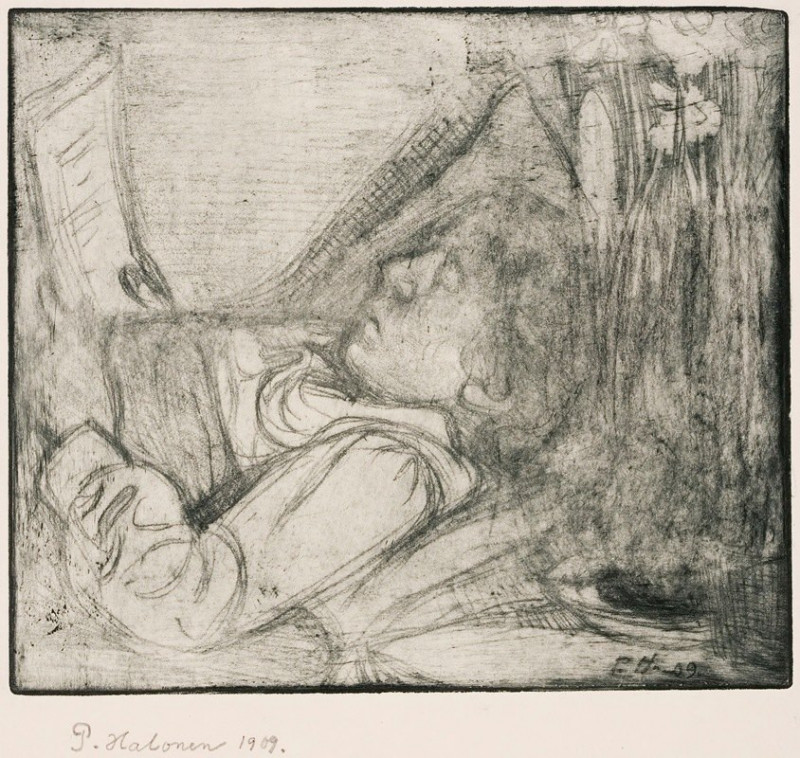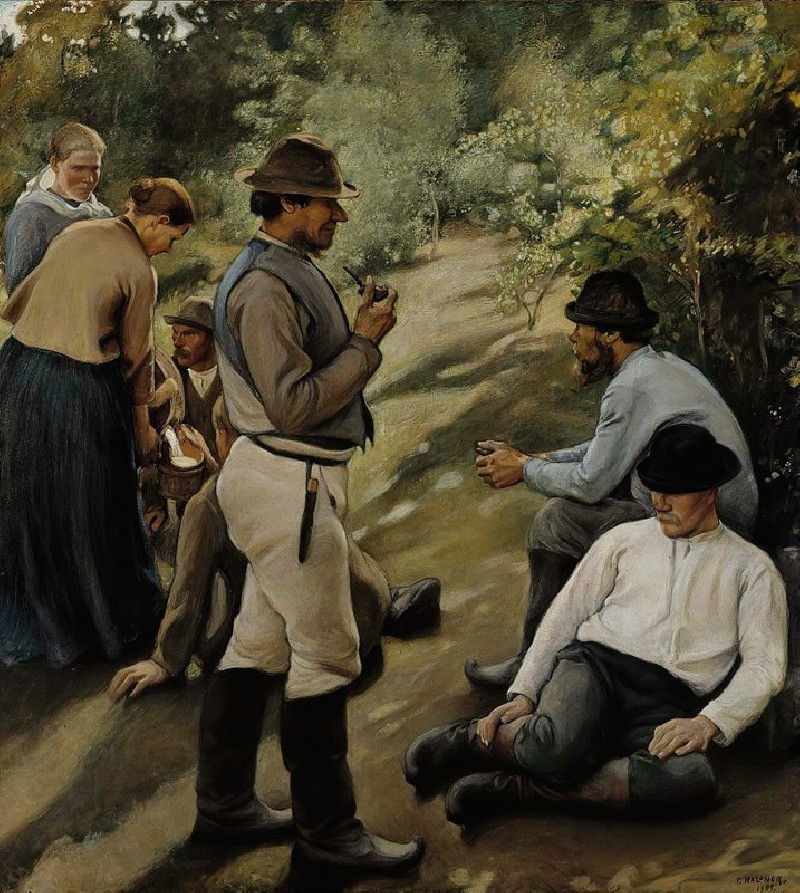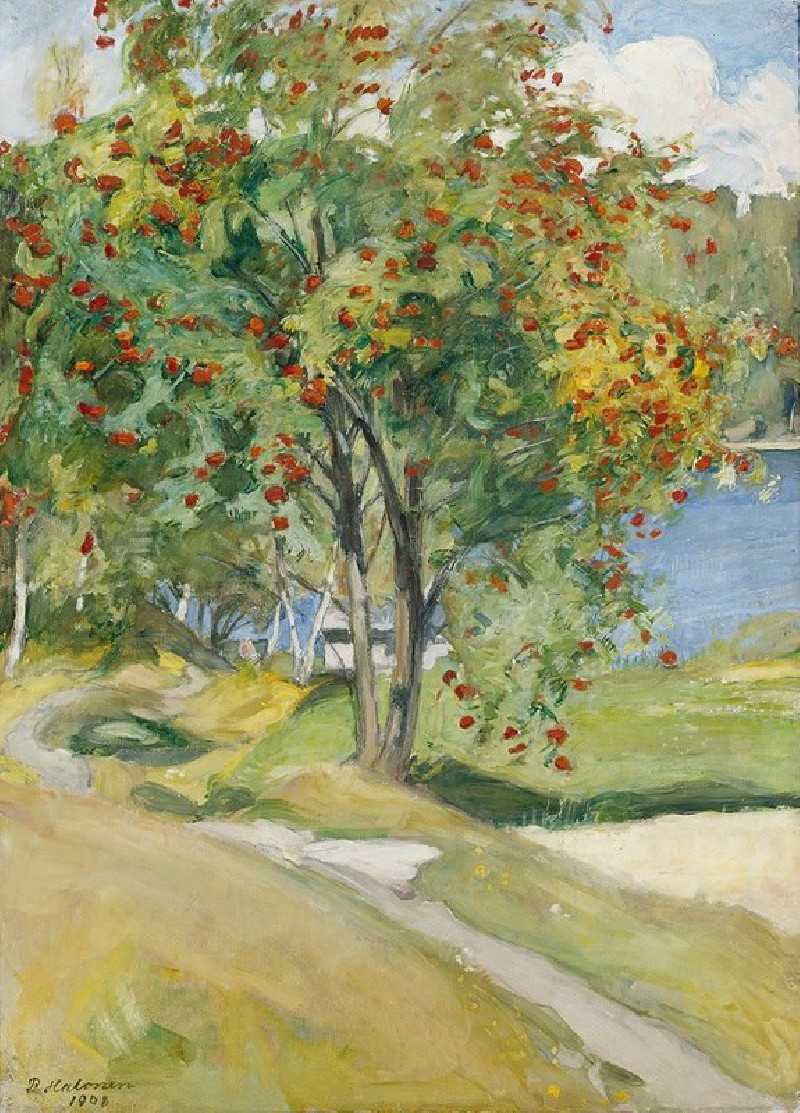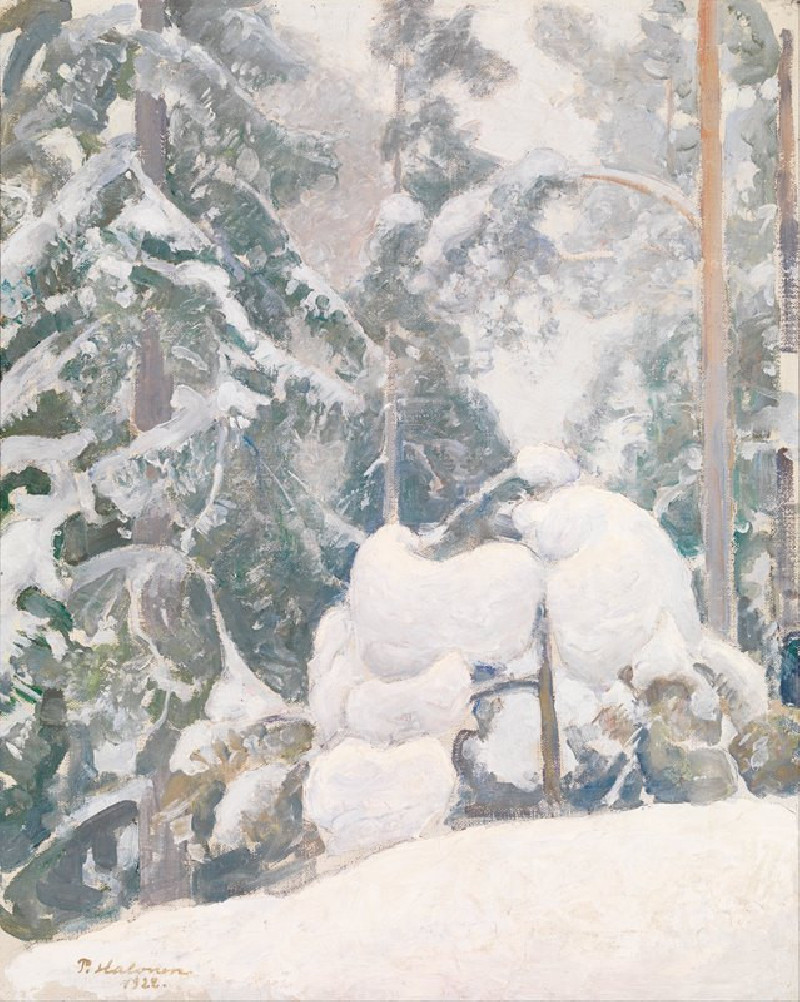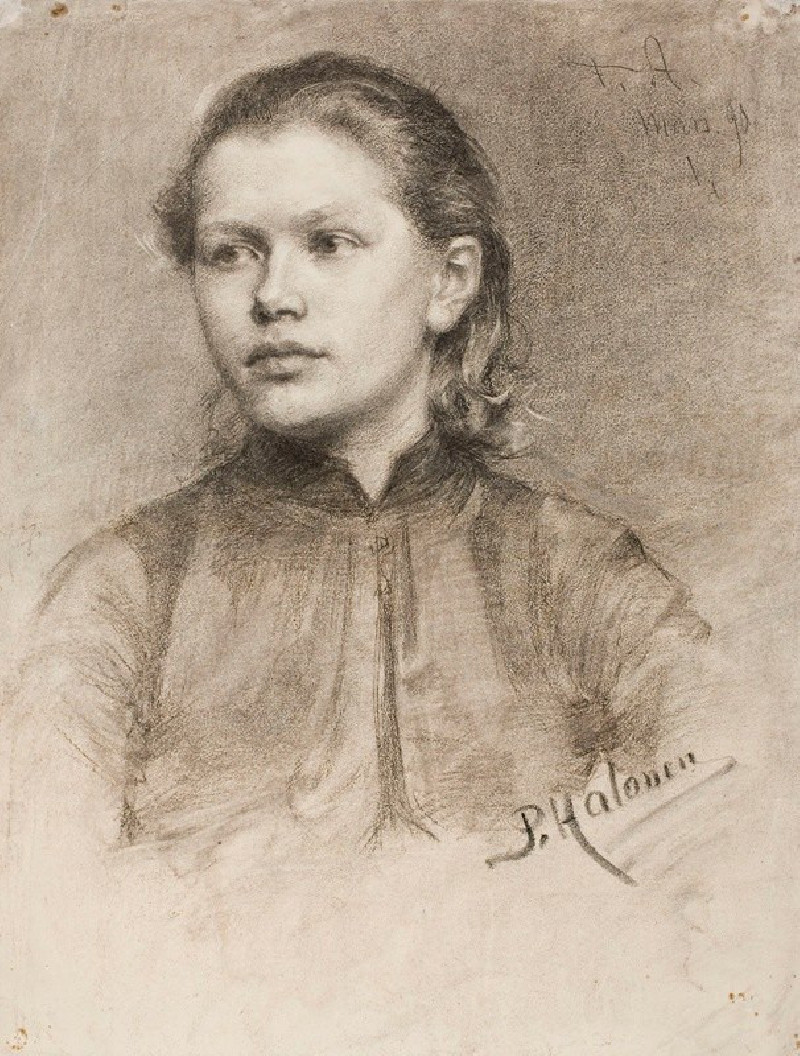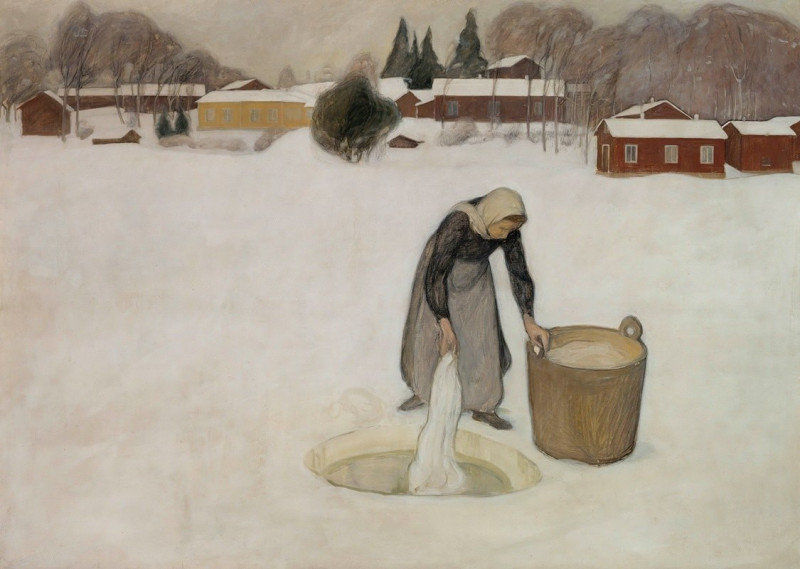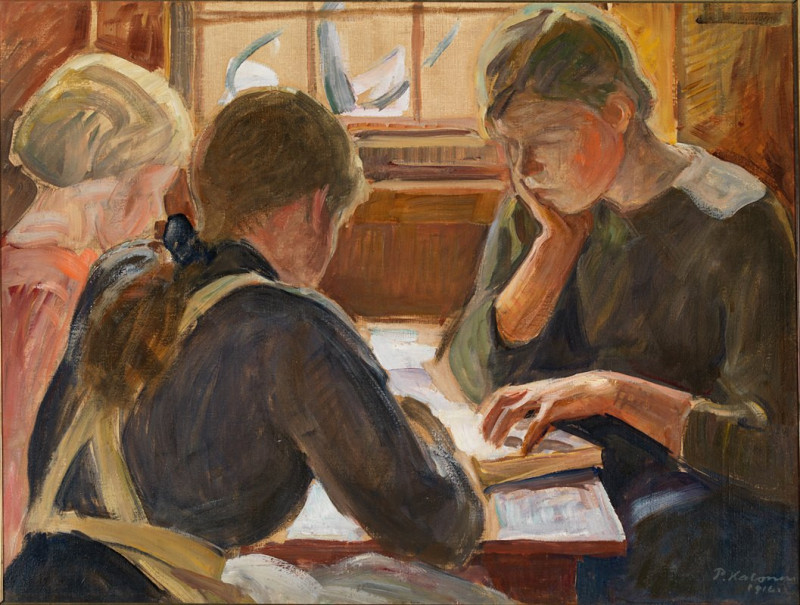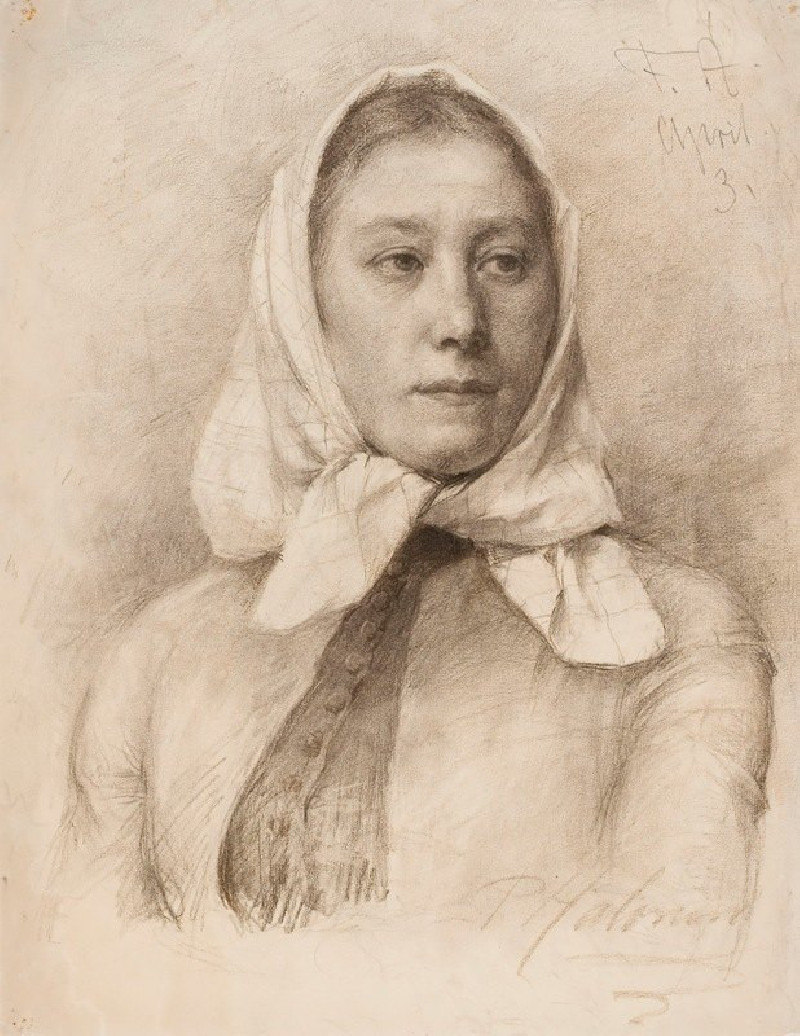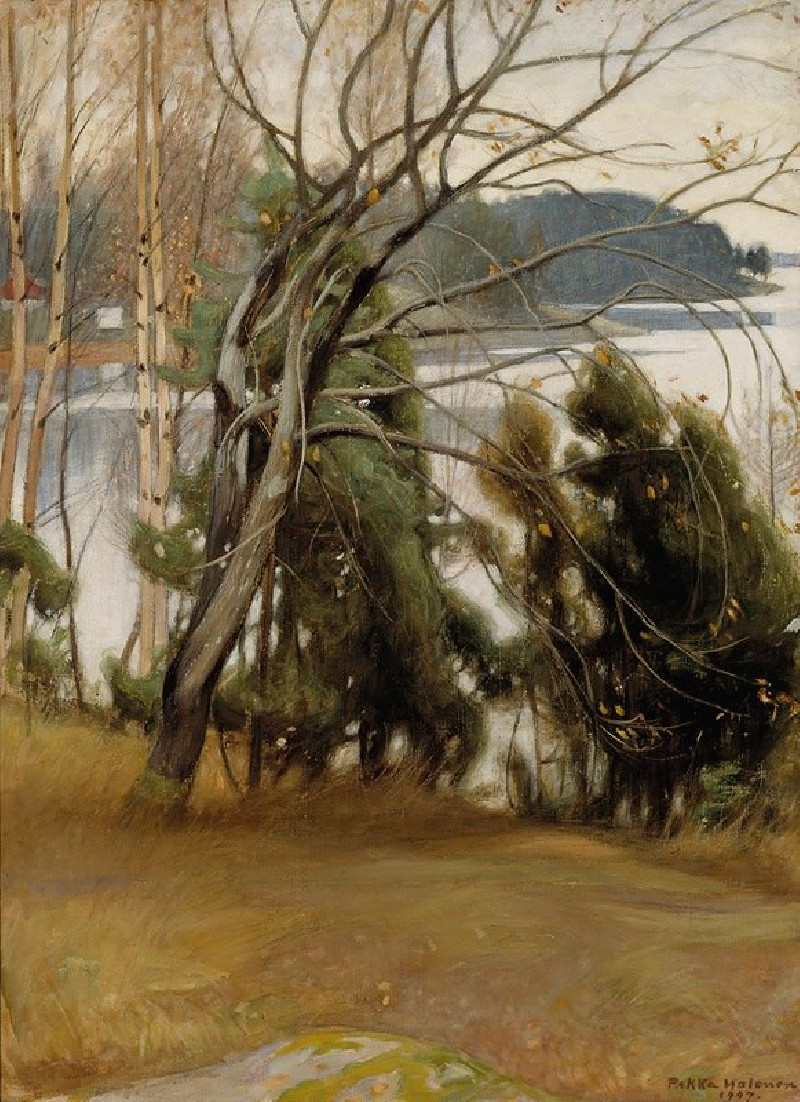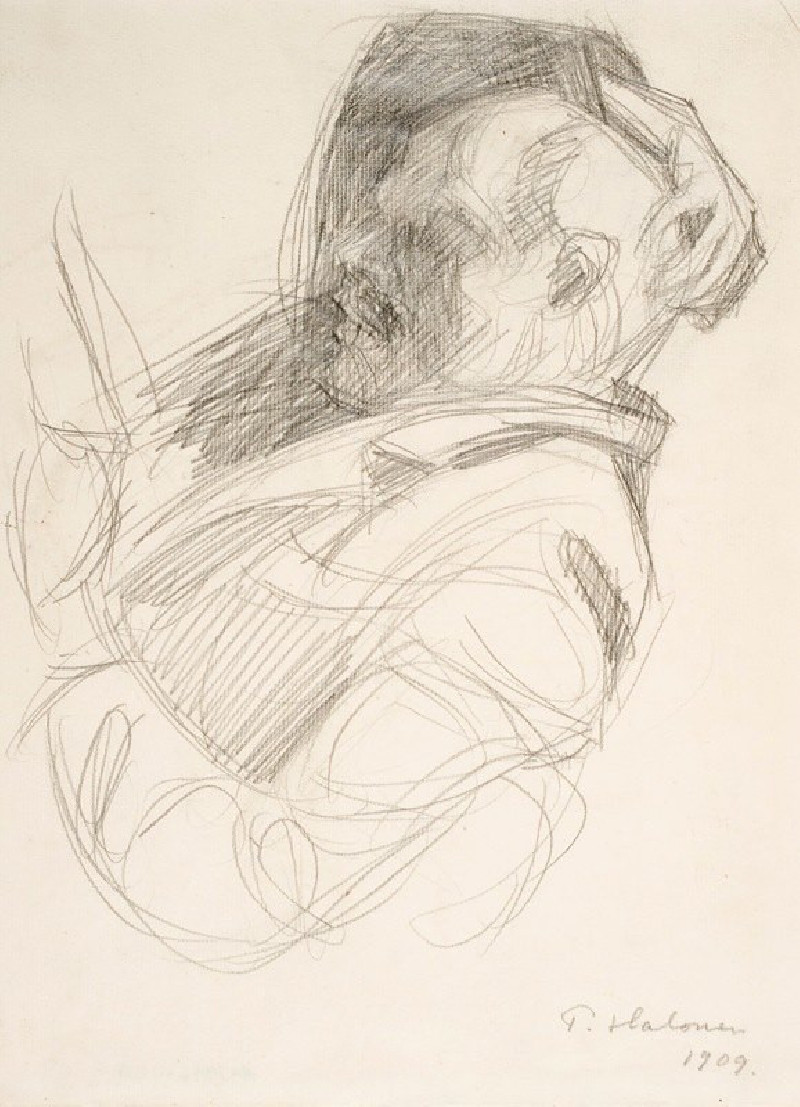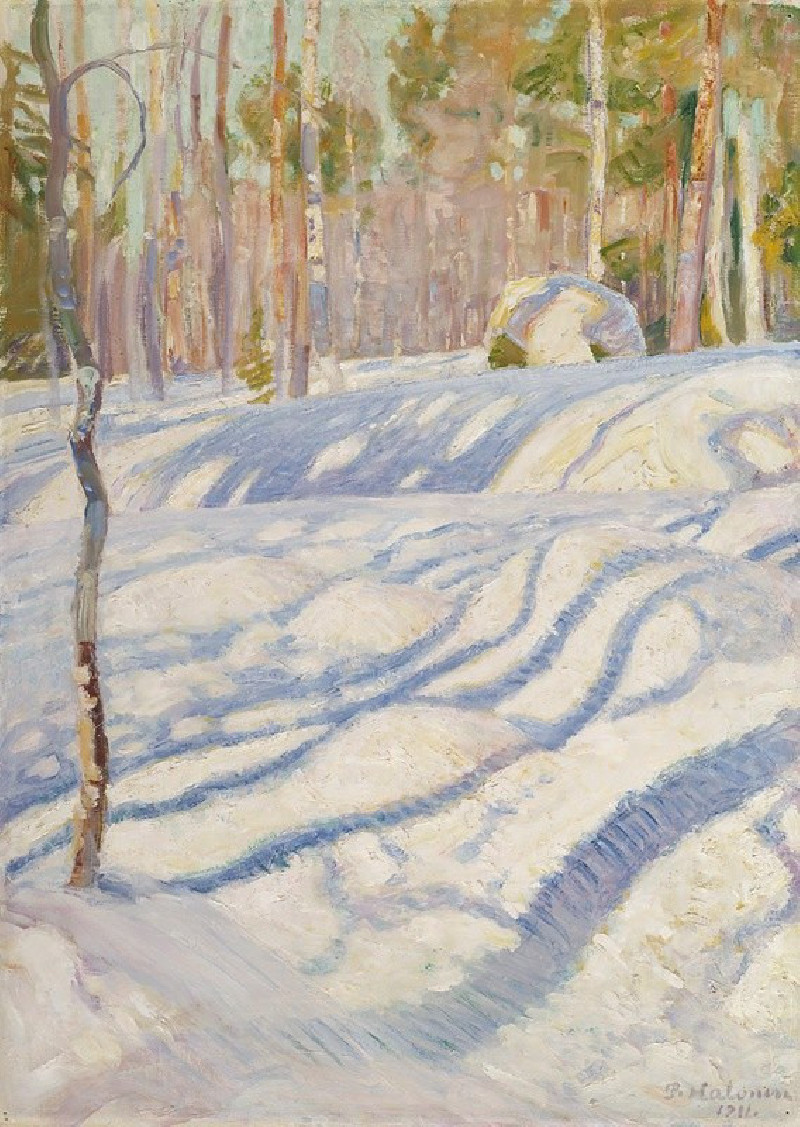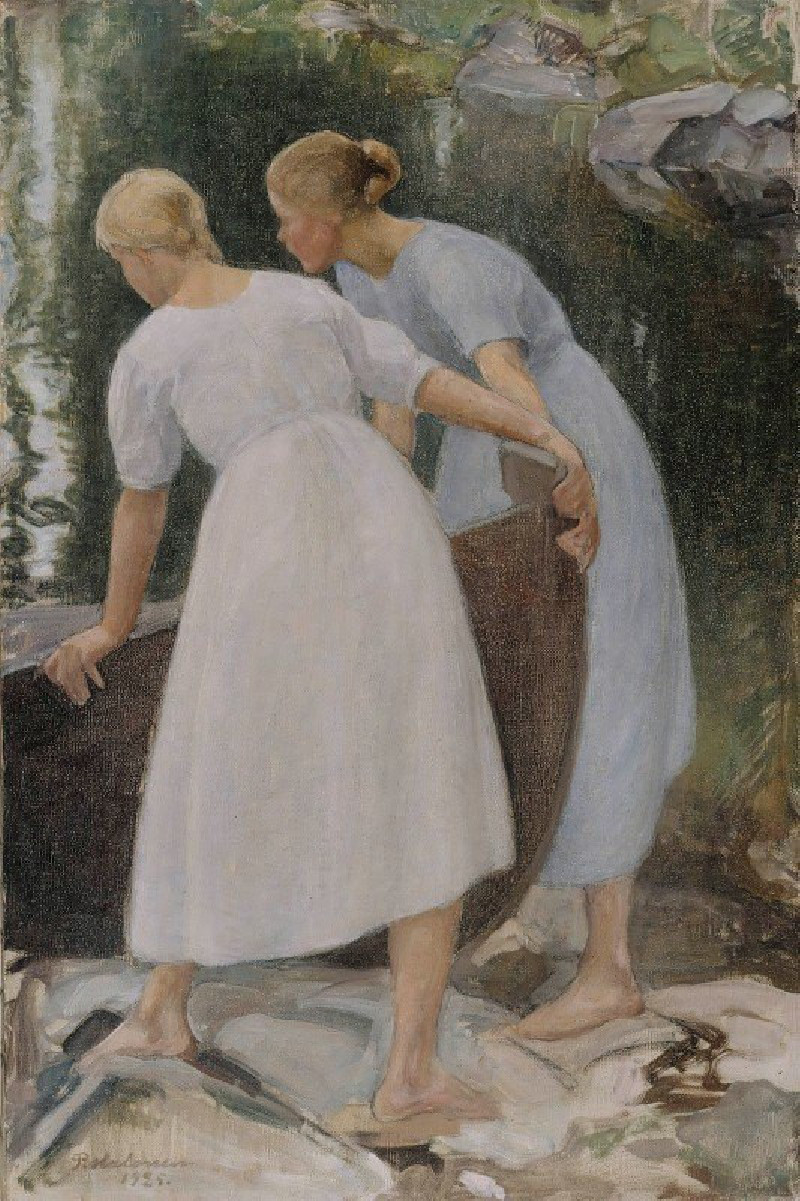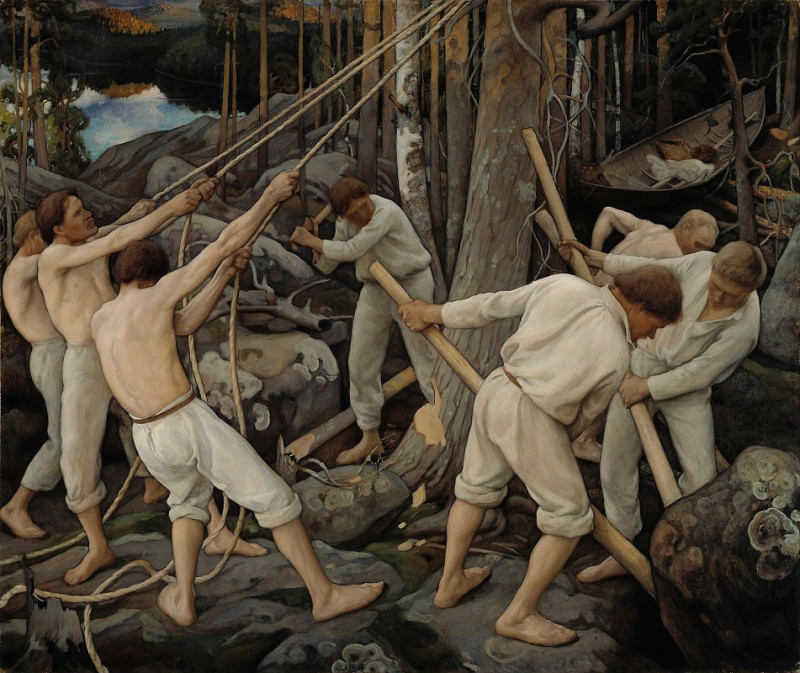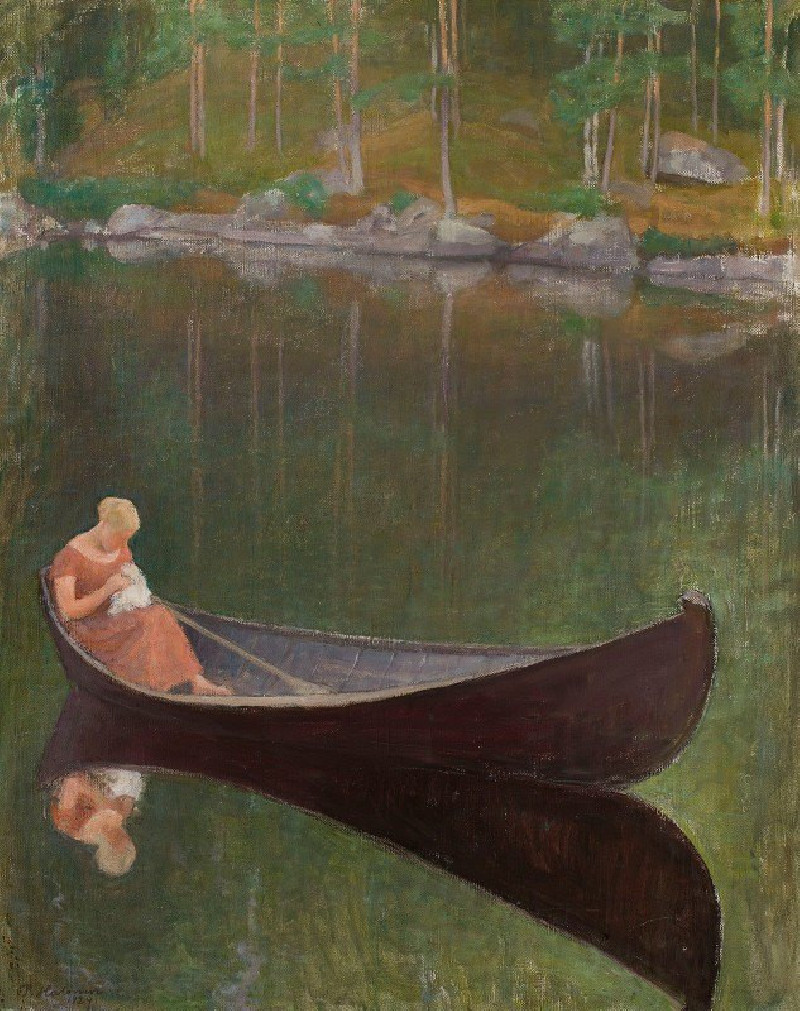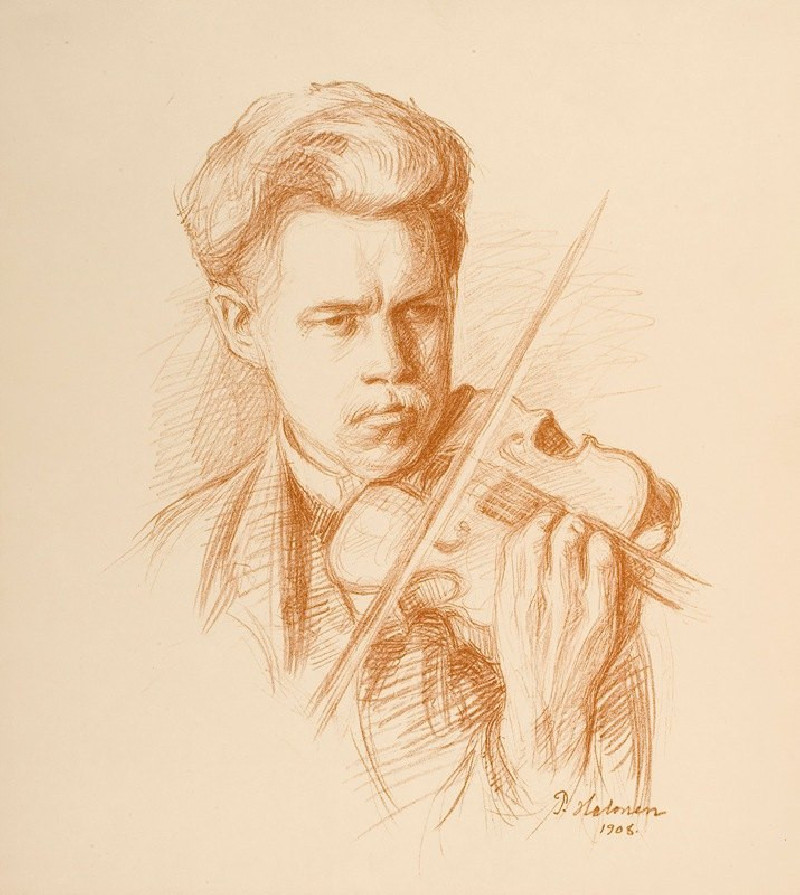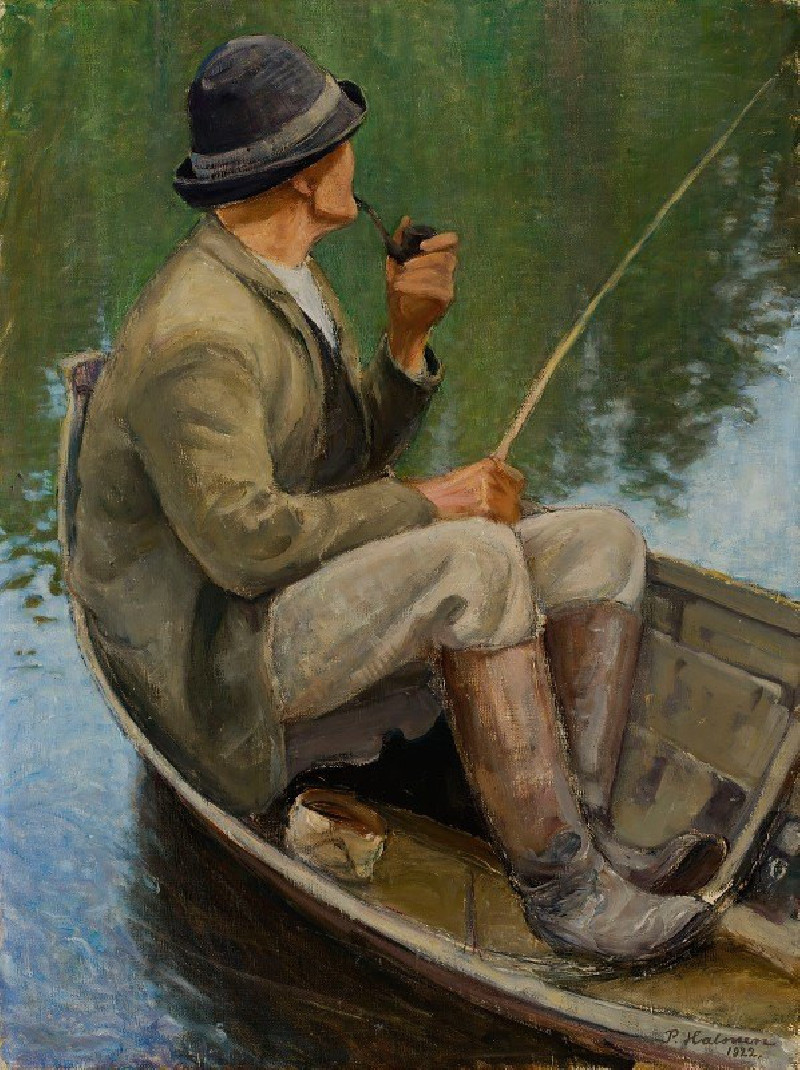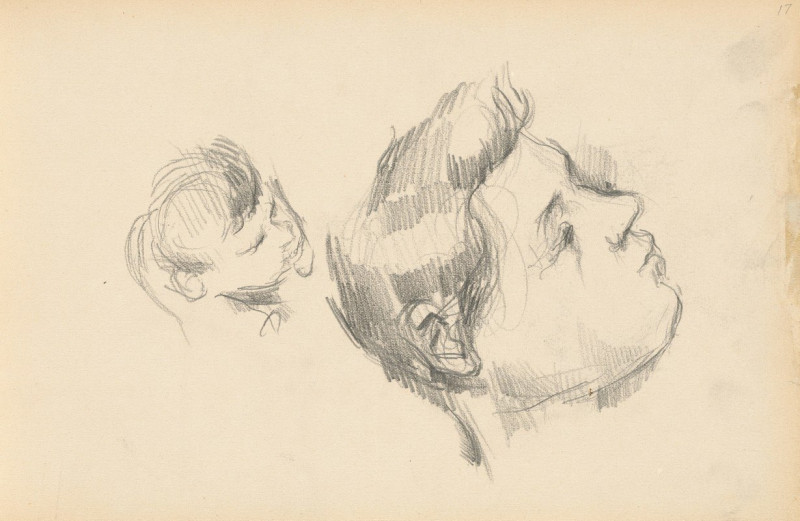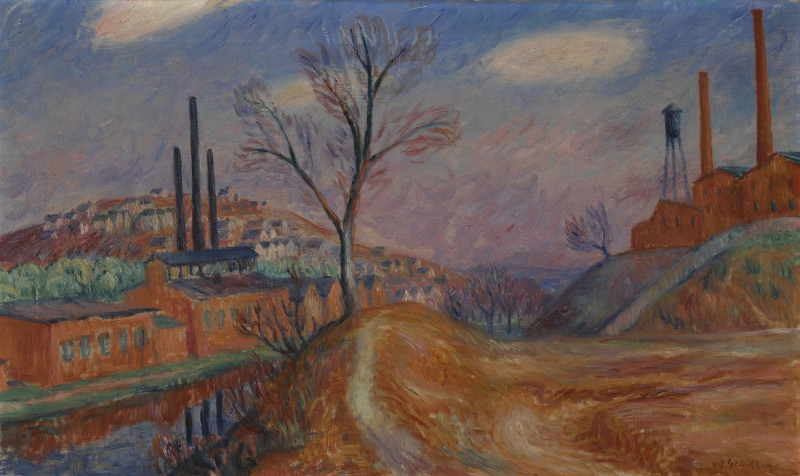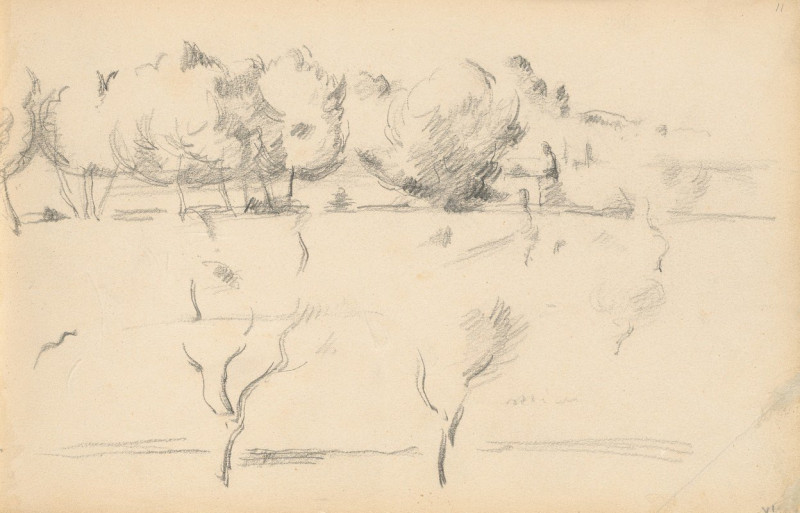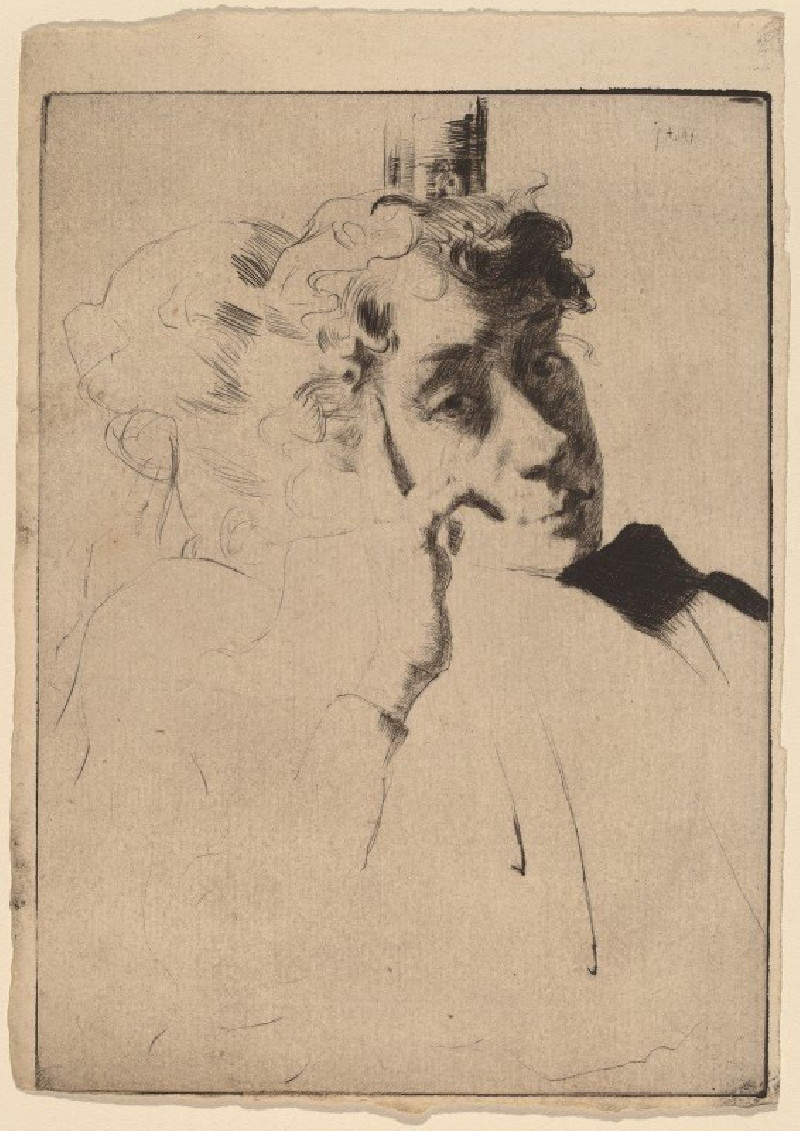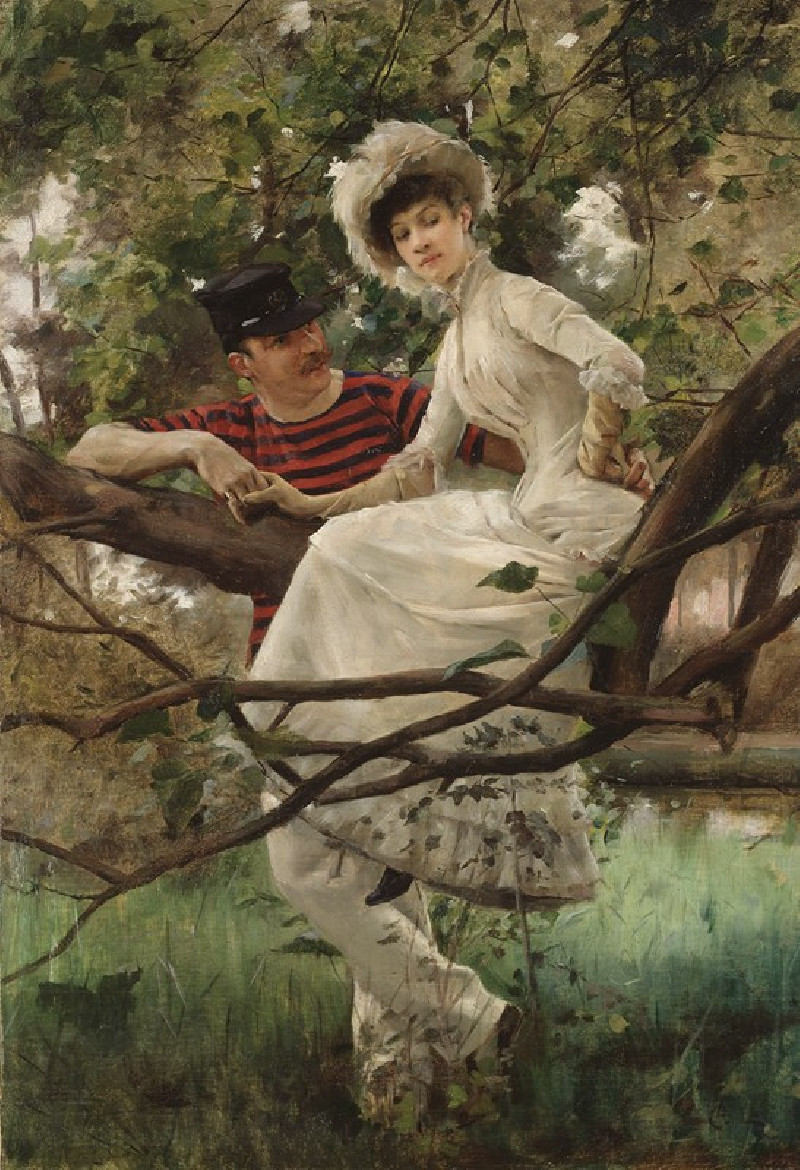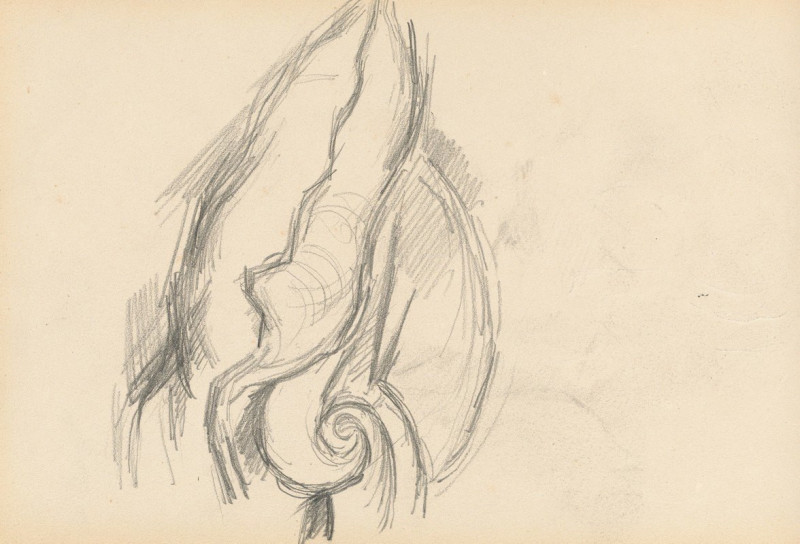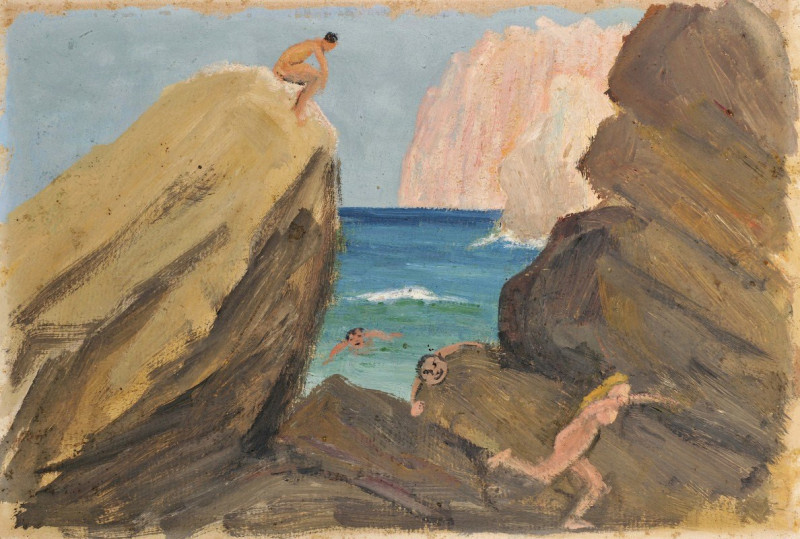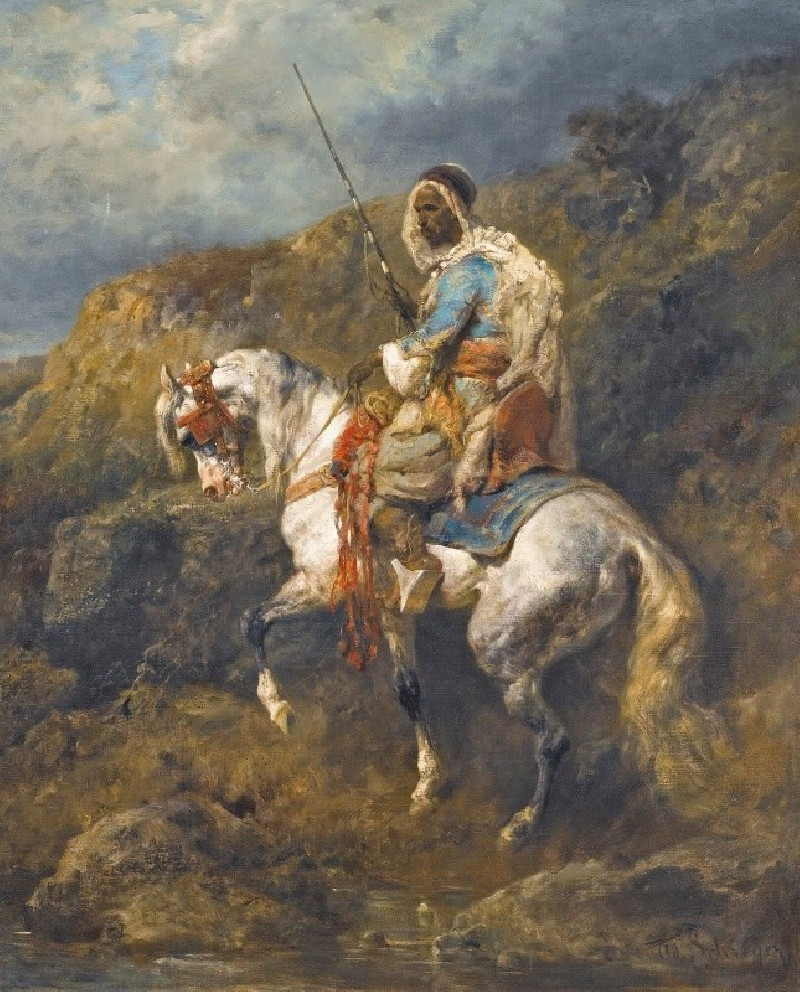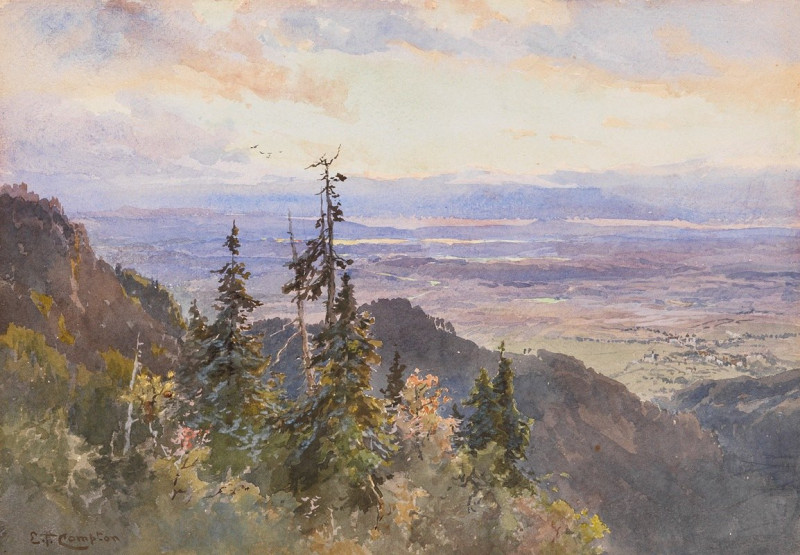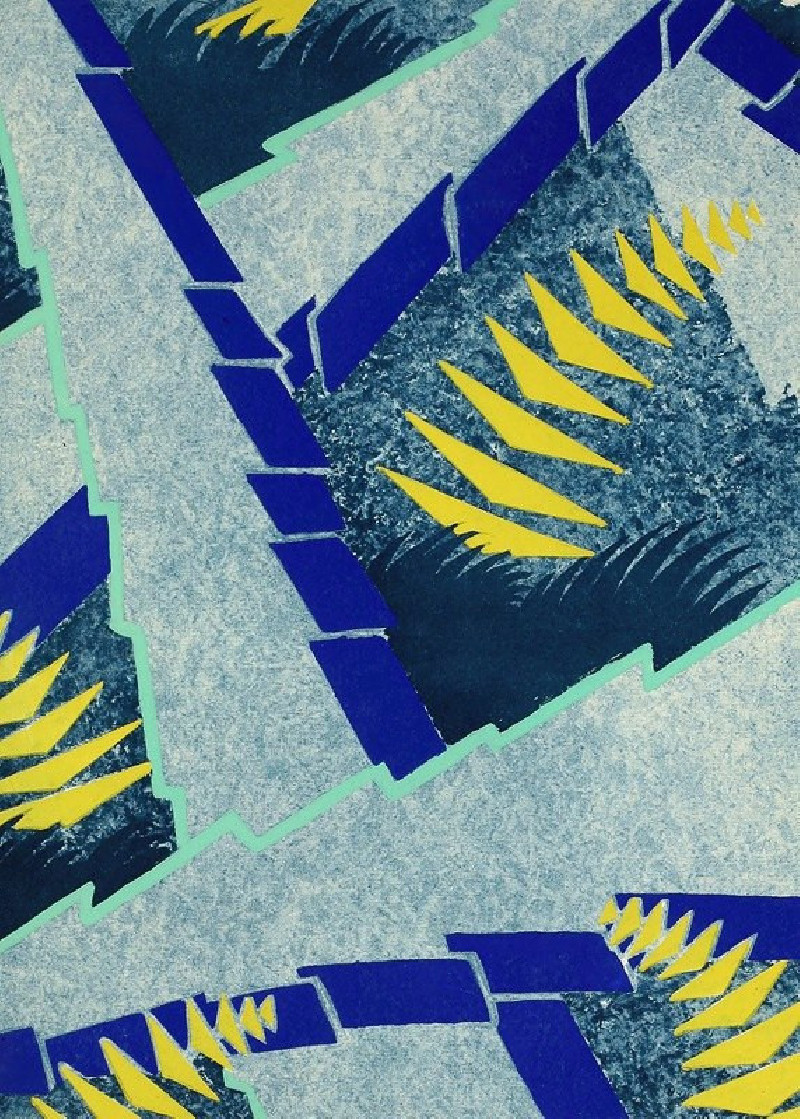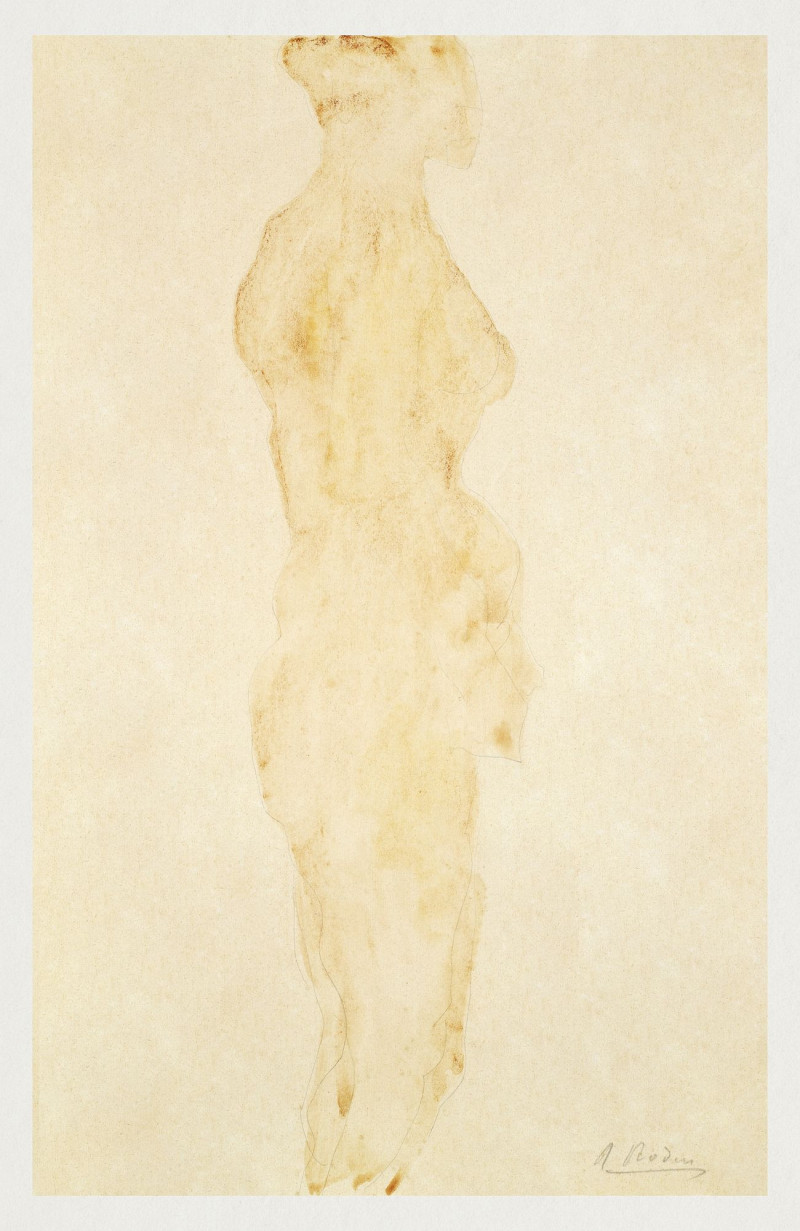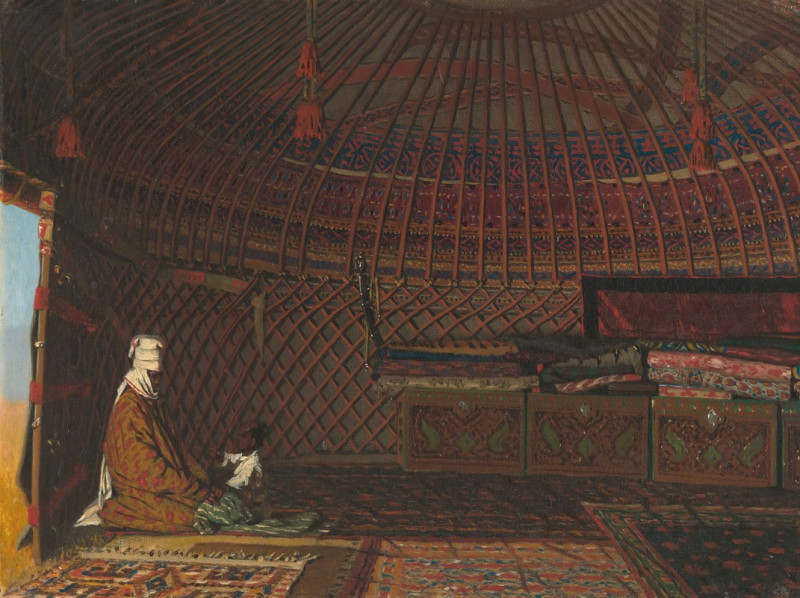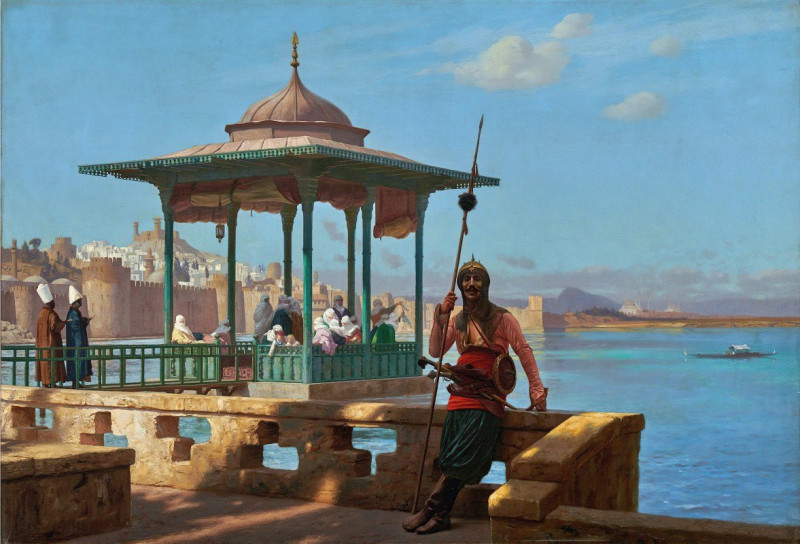Milo of Croton (1886)
Technique: Giclée quality print
Recommended by our customers
More about this artwork
This evocative artwork by Pekka Halonen, titled "Milo of Croton," brilliantly captures the dramatic end of the famous ancient Greek athlete. In this exquisite 1886 drawing, Halonen portrays Milo in a moment of intense agony and desperation. The subject's muscular physique, which once symbolized strength and victory, is here depicted in a struggle against an unseen force, reflecting the legendary tale of Milo's demise when he attempted to split a tree trunk that closed upon his hand, ultimately leaving him vulnerable to wild beasts.This pencil-on-paper drawing emphasizes raw emotion through finely detailed shading and anatomical precision. Halonen's skill in rendering human anatomy is on full display, with a focus on tensed muscles and expressive facial features. The composition, with Milo's upward gaze and contorted posture, adds to the overall sense of drama and movement, aligning classical themes with a markedly modern emotional intensity.
Delivery
Returns
Pekka Halonen was a painter of Finnish landscapes and people in the national romantic style. His favorite subjects were the Finnish landscape and its people which he depicted in his Realist style.
Pekka Halonen was born on 23 September 1865 in Linnasalmi, Lapinlahti, Finland, the son of Olli Halonen, a farmer, and Wilhelmina Halonen (née Uotinen).

